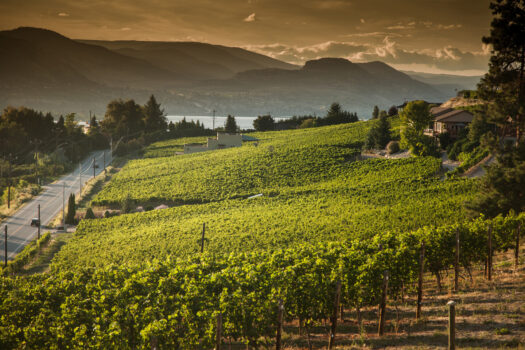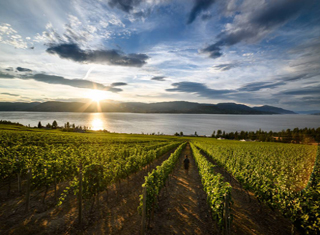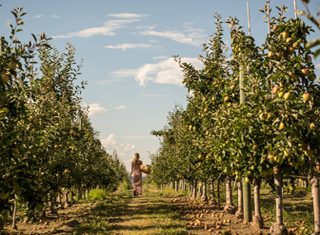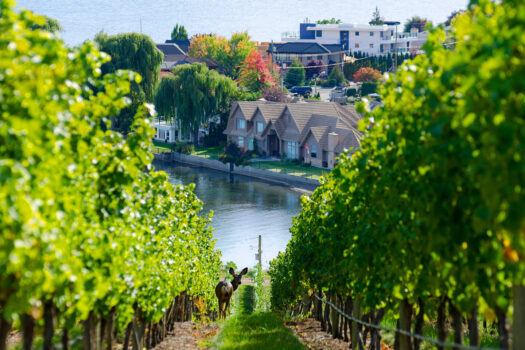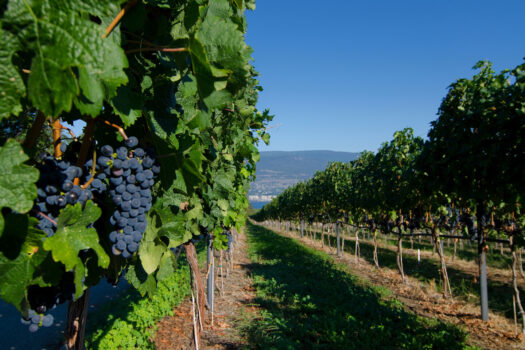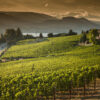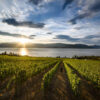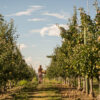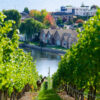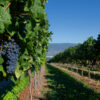Canada: New World Wines
Welcome to Canada
Canada is more than its hulking-mountain, craggy-coast good looks: it also cooks extraordinary meals, rocks cool culture and unfurls wild, moose-spotting road trips.
Canada New World Wines
The Pacific Northwest is one of the world’s most exciting, emerging wine producing regions. Furthermore, the wine industry has been revitalised through the skill and dedication of a new generation of grape growers and wine makers. Additionally, the diverse micro-climate variations have allowed ideal vineyard site selection for a wide range of classic European grape varieties and the results for the top wineries have been Gold Medals in International Wine Competitions. One of the annual highlights in the Okanagan Region of BC is the Fall Wine Festival in October!
For more Canada destinations, Click Here.
Dates
Dates on request
Suggested Itinerary by Air
Day 1
Arrival in Vancouver
Fly from the UK to Vancouver International Airport. On arrival you will be met by a guide and transferred to your hotel. The rest of the day is at leisure for you to relax and enjoy the hotel facilities.
Day 2
Vancouver – City Tour
Enjoy a guided tour of Vancouver including the main sights of Chinatown, historic Gastown, Robson shopping street and Granville Island public market. This afternoon is at leisure for you to explore the city on your own.
Day 3
Vancouver – Seattle
This morning travel south across the border into Washington State, USA, and along the eastern shore of Puget Sound. Although this area has a temperate climate it is not as hot as the interior of the state so winegrowers have adapted with early-ripening varieties, such as Pinot Noir and Chardonnay. Just north of Seattle, visit Silver Lake Winery, selected as Winery of the Year by Wine & Spirits Magazine. Here handcrafted premium varietal wines are produced from fruit selected from the Columbia Valley’s top vineyards.
Day 4
Seattle
After breakfast you will explore Seattle with a local guide. Visit the Pike Place Market, the Space Needle, historic Pioneer Square and the International District. In the afternoon, visit two of the area’s top wineries. Columbia Winery at Woodinville is Washington’s pioneer winery which has been leading the industry with vineyard designated Cabernets, Merlots and new varietals like Syrah. The winery is housed in a magnificent Victorian style building and the wines have won worldwide acclaim for their consistently high quality. Nearby is Chateau Ste. Michelle where the wine from their Columbia Valley vineyards is crushed, fermented and aged in small French oak barrels and bottled. Tour the cellar and enjoy a wine tasting of their highly acclaimed Cabernet Sauvignons and Merlots in this beautiful location on the estate of a former Seattle lumber baron.
Day 5
Seattle – Yakima – Kennewick
This morning travel east from Seattle across the Cascade Mountains into the Yakima Valley, Washington’s first approved viticulture area. The area has been heavily irrigated by the Yakima River, which allows for the highest percentage of vineyard plantings per square mile. The wide range of varietals planted includes Chardonnay, Cabernet Sauvignon, Riesling and Pinot Noir. Visit Covey Run Vintners that offers award winning varietals ranging from Chardonnay to Lemberger and Riesling. The winery has a beautiful setting overlooking the vineyard, rolling hills and Mt. Adam. Later, visit Columbia Crest Winery, one of the most impressive wineries in the Northwest. The complex houses more than a million gallons of wine and the informative guided tour gives an insight into large scale winemaking in the area. Continue to Kennewick on the Columbia River.
Day 6
Kennewick – Wenatchee
Today you will visit Hedges Cellars at Red Mountain which has built an outstanding reputation by specialising in a few wines: Red Mountain Reserve, Cabernet/ Merlot and Fume/Chardonnay. Red Mountain is one of the distinctive sub-regions of the Yakima Valley appellation and grapes from this area are some of the most coveted in Washington. Continue to Preston Premium wines, which has 180 acres of vineyards. Their wines include a major selection of varietals as well as sparkling wines and ports. This afternoon we drive north along the Columbia River Valley to Wenatchee, a major centre for apple growing.
Day 7
Wenatchee – Kelowna
Travel northwards crossing into Canada at the town of Osoyoos. Enter the Similkameen, a high desert valley which is a relatively new wine region. At Oliver, visit Gehringer Brothers Estate Winery for a tasting of their award winning varietal wines including Ehrenfelser, Riesling, Pinot Gris and Muller-Thurgau.
Day 8
Kelowna
Spend a full day touring wineries of the Okanagan Valley, BC’s oldest and largest wine producing area, dating back to the 1800s. The vineyards stretch over the hillsides surrounding three major lakes, which provide a wonderful scenic backdrop. In the 1970s, the revitalisation of BC’s wine industry began when inferior vines were uprooted and replanted with high quality vinifera vines. Now nearly all vineyards are producing well known grapes such as Chardonnay, Pinot Noir, Riesling and Merlot. Visit Cedar Creek Estate winery and Calona Vineyards which is BC’s oldest winery and also has a small museum of antique winemaking machines.
Day 9
Kelowna
This morning visit the Pacific AgriFood Research Centre to learn about the development of vines specifically adapted to the areas climate and environment. Afterwards visit the Sumac Ridge Winery, which aside from the main varietal wines also produces sparkling wines and dessert wines. The visit includes a tour of the vineyards, cellars and equipment followed by a tasting. Return to Kelowna for a visit to the Kelowna Wine Museum which houses wine making artefacts including corks, labels, bottles and machinery.
Day 10
Kelowna – Banff
Today you will travel north through Vernon to Revelstoke then across Rogers Pass in Glacier National Park to Golden. Visit Yoho National Park, stopping to view the Natural Rock Bridge, the Spiral Train Tunnels and picturesque Emerald Lake before continuing via Lake Louise to Banff.
Day 11
Banff
Enjoy a sightseeing tour of Banff including Tunnel Mountain drive with the hoodoos (rock chimneys formed by the wind), Bow Falls and the Banff Springs Hotel. There’s also an opportunity to ride up Banff Gondola for panoramic views over the valley.
Day 12
Banff – Calgary
This morning you will have time to explore Banff on your own before transferring to Calgary Airport for your flight to the UK.
Option to extend this tour to Toronto.
When To Go:
High Season (Jun–Aug): Sunshine and warm weather prevail; far northern regions briefly thaw. Accommodation prices peak (up 30% on average). December through March is equally busy and expensive in ski resort towns. Shoulder (May, Sep & Oct): Crowds and prices drop off. Temperatures are cool but comfortable. Attractions keep shorter hours. Fall foliage areas (eg Cape Breton, Québec) remain busy. Low Season (Nov–Apr): Places outside the big cities and ski resorts close. Darkness and cold take over. April and November are particularly good for bargains.
Things To Know:
Etiquette
Canadians are a fairly relaxed crowd and don’t offend easily; however, some rules of etiquette do apply.
- Politeness Canadians value their please and thank-yous. Bumping into someone without apologizing or not thanking someone for holding the door will earned shocked looks.
- Patriotism Commenting that Canadians and Americans aren’t much different is considered highly offensive.
- Language In French-speaking areas, always attempt to speak French before English (regardless of how poor your French is).
- Lining up While Canadians usually tut rather than speak out, jumping ahead in line is an exception and can cause a full-blown argument.
History
The human story of Canada begins around 15,000 years ago, when Aboriginal locals began carving thriving communities from the abundant wilderness. Everything changed, though, when the Europeans rolled in from the late 15th century onward, staking claims that triggered rumbling conflicts and eventually shaped a vast new nation. Much of this colorful heritage is accessible to visitors, with more than 950 national historic sites covering everything from forts to battlefields to famous homes.
Health and Insurance
Health Insurance
Canada offers some of the finest health care in the world. However, unless you are a Canadian citizen, it can be prohibitively expensive. It’s essential to purchase travel health insurance if your regular policy doesn’t cover you when you’re abroad. Check www.lonelyplanet.com/travel-insurance for supplemental insurance information.
Bring medications you may need clearly labeled in their original containers. A signed, dated letter from your physician that describes your medical conditions and medications, including generic names, is also a good idea.
Health Insurance; a policy covering medical expenses is highly recommended.
Vaccinations; No special vaccines are required or recommended for travel to Canada. All travelers should be up to date on routine immunizations.
Stats
Currency: Canadian dollar, Primary Language: English, French, Primary Religion: 43% Roman Catholic, Population: 34.6 million, Time Zone: see below.
Newfoundland Standard Time (GMT/UTC minus 3½ hours)
Atlantic Standard Time (GMT/UTC minus four hours)
Eastern Standard Time (GMT/UTC minus five hours)
Central Standard Time (GMT/UTC minus six hours)
Mountain Standard Time (GMT/UTC minus seven hours)
Pacific Standard Time (GMT/UTC minus eight hours)
Visa Requirements:
British citizens are required to apply for a Canada eTA visa to enter Canada on a short term basis (under 90 days) for general tourism, business, transit or medical purposes. … It is advised that British citizens complete their eTA application 72 hours prior to their departure date.
For more information please visit the link below:


